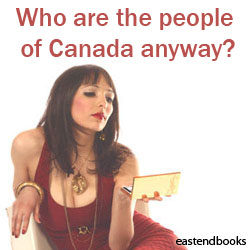Evolution of modern Canada’s democratic constitution
Apr 3rd, 2006 | By Citizen X | Category: Canadian Republic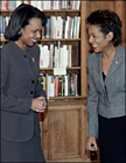 It is an inescapable part of Canada’s fate that it lives right next door to the pioneering democracy of the United States of America. And, according to Akhil Reed Amar’s recent much-praised book on the subject, the Constitution of the United States, as officially adopted on June 21, 1788, is “one of the most important texts in world history.”
It is an inescapable part of Canada’s fate that it lives right next door to the pioneering democracy of the United States of America. And, according to Akhil Reed Amar’s recent much-praised book on the subject, the Constitution of the United States, as officially adopted on June 21, 1788, is “one of the most important texts in world history.”
As important as it is to Canadians, the Constitution of Canada is a different and of course more “marginal” thing. It has evolved more haphazardly, without any violent break with the past. It cannot be reduced to any one single text, and it has important “unwritten” components. Yet it also has some modest interest “in world history” – as explained by James Bryce in his classic book of the early 20th century, Modern Democracies:
“The study of popular government in Canada derives a peculiar interest from the fact that while the economic and social conditions of the country are generally similar to those of the United States, the political institutions have been framed upon English models, and the political habits, traditions, and usages have retained an English character. Thus it is that in Canada, better perhaps than in any other country, the working of the English system can be judged in its application to the facts of a new and swiftly growing country, thoroughly democratic in its ideas and its institutions.”
The British North America Act in 1867
 The modern Canadian confederation born on July 1, 1867 was the “first self-governing dominion of the British Empire.” (Which is also what Benjamin Franklin and others had in effect wanted the original United States to be, as late as the early 1770s.) The closest thing Canada today has to a founding document was originally known as the British North America Act (now called the Constitution Act 1867). It was originally just an ordinary legislative act of the parliament of the United Kingdom. Its preamble still covers a lot of ground with the very broad assertion that the new Canada is to have “a Constitution similar in Principle to that of the United Kingdom.”
The modern Canadian confederation born on July 1, 1867 was the “first self-governing dominion of the British Empire.” (Which is also what Benjamin Franklin and others had in effect wanted the original United States to be, as late as the early 1770s.) The closest thing Canada today has to a founding document was originally known as the British North America Act (now called the Constitution Act 1867). It was originally just an ordinary legislative act of the parliament of the United Kingdom. Its preamble still covers a lot of ground with the very broad assertion that the new Canada is to have “a Constitution similar in Principle to that of the United Kingdom.”
The Canada that began this way in 1867 was more than a colony of the United Kingdom. It was “self-governing.” But in various ways (especially but not just foreign policy) it remained for some time under the ultimate tutelage of the imperial government across the sea. In the fall of 1874 George Brown at the original Toronto Globe took pains to stress that the new “Canada is not a nation.” (Among other things, it still needed the strong arm of the United Kingdom to protect it from the continental territorial ambitions of the United States.)
The oh-so-gradual evolution of the 20th century democracy
 Over the almost 140 years that have elapsed since the start of the 1867 confederation Canada has ever so slowly but nonetheless surely become a new kind of “political nation” in its own right. It is nowadays, e.g., its own separate and distinct member of the United Nations.
Over the almost 140 years that have elapsed since the start of the 1867 confederation Canada has ever so slowly but nonetheless surely become a new kind of “political nation” in its own right. It is nowadays, e.g., its own separate and distinct member of the United Nations.
 Careful historians stress that the Canada created in 1867, in which John A. Macdonald and Georges Etienne Cartier took such a leading role, was still too politically conservative and colonial a place to call itself “a democracy.” And they are right. But by the time James Bryce from the United Kingdom published his book on Modern Democracies in 1921 he had no doubt that Canada had already become “thoroughly democratic in its ideas and its institutions.”
Careful historians stress that the Canada created in 1867, in which John A. Macdonald and Georges Etienne Cartier took such a leading role, was still too politically conservative and colonial a place to call itself “a democracy.” And they are right. But by the time James Bryce from the United Kingdom published his book on Modern Democracies in 1921 he had no doubt that Canada had already become “thoroughly democratic in its ideas and its institutions.”
The practical and increasingly independent democracy that Bryce had seen at work in Canada by the early 1920s, however, would take still more time to attain its full constitutional expression. Canada did not negotiate its first international treaty without British involvement until 1923. (The treaty was with the United States and dealt with fishing rights.)
It was not until the imperial Statute of Westminster in 1931 that Canada and what had by that point become its fellow self-governing British dominions (Australia, New Zealand, and so forth) became formally and fully autonomous from the government of the United Kingdom. (And even here the power to amend what was still then called the British North America Act remained with the UK Parliament that had passed it in the first place, because Canada and its provinces could not agree on any other method of amendment.)
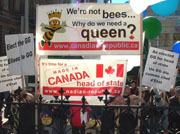 Until 1947 there was no such legal status as a “Canadian citizen” – as opposed to a “British subject” resident in Canada. It was not until 1949 that the Supreme Court of Canada replaced the Judicial Committee of the Privy Council in the United Kingdom as the highest court of appeal for all legal cases in Canada.
Until 1947 there was no such legal status as a “Canadian citizen” – as opposed to a “British subject” resident in Canada. It was not until 1949 that the Supreme Court of Canada replaced the Judicial Committee of the Privy Council in the United Kingdom as the highest court of appeal for all legal cases in Canada.
It was not until 1952 that a Canadian prime minister appointed a Canadian citizen as governor general of Canada. (The 17 governors general from 1867 to 1952 had all been British aristocrats, appointed at least until the Statute of Westminster exclusively by the government of the United Kingdom – with the intriguing partial exception of the British “commoner” James Buchan, who finally became governor general of Canada as Lord Tweedsmuir, 19351940.)
 Canada did not have its own independent and distinctive national flag until 1965, within memory of many still alive today. And the arrival of the new flag was surrounded by noisy opposition from continuing diehard defenders of the old colonial flags – just as the current rising interest in finally also giving Canada its own independent Canadian head of state meets with noisy protests from what now remains of still similar diehard defenders in the Monarchist League.
Canada did not have its own independent and distinctive national flag until 1965, within memory of many still alive today. And the arrival of the new flag was surrounded by noisy opposition from continuing diehard defenders of the old colonial flags – just as the current rising interest in finally also giving Canada its own independent Canadian head of state meets with noisy protests from what now remains of still similar diehard defenders in the Monarchist League.
The Constitution Act 1982
 Pierre Trudeau’s new Constitution Act 1982, in the wake of the first Quebec sovereignty referendum in 1980, came very close to severing all remaining old quasi-colonial and imperial legal and constitutional linkages between Canada and the United Kingdom. It at last “patriated” the British North America Act from the United Kingdom (as the Constitution Act 1867), and provided a somewhat demanding but thoroughly home-grown constitutional amending formula. It also established a new constitutionally entrenched Canadian Charter of Rights and Freedoms.
Pierre Trudeau’s new Constitution Act 1982, in the wake of the first Quebec sovereignty referendum in 1980, came very close to severing all remaining old quasi-colonial and imperial legal and constitutional linkages between Canada and the United Kingdom. It at last “patriated” the British North America Act from the United Kingdom (as the Constitution Act 1867), and provided a somewhat demanding but thoroughly home-grown constitutional amending formula. It also established a new constitutionally entrenched Canadian Charter of Rights and Freedoms.
The Charter of Rights and Freedoms in the Constitution Act 1982 almost put the finishing touches on a new independent and effectively republican form of Canadian parliamentary democratic government that had been evolving since the early 20th century. It was still “framed upon English models,” but otherwise mature and free-standing in its own right.
 Yet Canada in the early 1980s was still not quite ready to cut the very last apron strings to its (second) colonial mother country in the United Kingdom. (Or to recognize Quebec’s unique role in the confederation, or reform a Canadian Senate still too much modeled on the 19th century British House of Lords, or to clarify the traditional rights of the aboriginal peoples of Canada.) The Constitution Act 1982 also retained the polite fiction that the ultimate legal and constitutional form of Canada was still that of a constitutional monarchy, presided over by the monarch in the United Kingdom.
Yet Canada in the early 1980s was still not quite ready to cut the very last apron strings to its (second) colonial mother country in the United Kingdom. (Or to recognize Quebec’s unique role in the confederation, or reform a Canadian Senate still too much modeled on the 19th century British House of Lords, or to clarify the traditional rights of the aboriginal peoples of Canada.) The Constitution Act 1982 also retained the polite fiction that the ultimate legal and constitutional form of Canada was still that of a constitutional monarchy, presided over by the monarch in the United Kingdom.
(Though since 1952 the monarch was represented in Canada by a Canadian citizen appointed by the Canadian prime minister as governor general of Canada. And virtually all the effective remaining powers of the monarch inside Canada had already been delegated to the governor general in 1947 – the same year that the first Canadian Citizenship Act took effect.)
The deepest origins of modern Canada
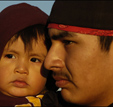 The best reason for leaving what section 41 of the Constitution Act 1982 calls “the Office of the Queen” intact in the early 1980s was that opinion polls of the day still showed at least a bare majority of Canadians in favour of retaining the symbolism of the British monarchy in Canada.
The best reason for leaving what section 41 of the Constitution Act 1982 calls “the Office of the Queen” intact in the early 1980s was that opinion polls of the day still showed at least a bare majority of Canadians in favour of retaining the symbolism of the British monarchy in Canada.
By the middle of the 1990s, however (around the time of the second Quebec sovereignty referendum in 1995), opinion polls had begun to suggest increasingly dwindling popular sentiment of this sort, alongside deepening symbolic commitments to the practical sovereignty of the Canadian people, in what the Constitution Act 1982 calls present-day Canada’s “free and democratic society,” with its own Canadian Charter of Rights and Freedoms.
 By the early 21st century as well Canadian society across the country had begun to recover some sense of the most authentic depths and diversity of its modern origins. Legally and constitutionally, the present Canadian confederation began in 1867. But today’s Canadian people have a history that reaches much further back in the mists of time.
By the early 21st century as well Canadian society across the country had begun to recover some sense of the most authentic depths and diversity of its modern origins. Legally and constitutionally, the present Canadian confederation began in 1867. But today’s Canadian people have a history that reaches much further back in the mists of time.
The original founding legend of modern Canada turns around the cod fisheries of the Atlantic resource economy and the remarkable canoe-bound expansion of the interior resource economy of the multiracial “Indian-European” fur trade in the 17th, 18th, and earlier 19th centuries – in the unique east-west, lakes-and-rivers geography of northern North America. This exotic, in some ways improbable, but finally altogether true story is what first brought the present Canadian territory into the modern world economy.
Modern Canadian diversity … past and present
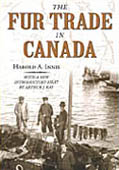 As the emerging Canadian historical scholarship of the first half of the 20th century made clear, the near-mythical Montreal-headquartered fur-trading enterprise of the North West Company, which had expanded to the Pacific Ocean by the early 19th century, was “the forerunner” of the modern Canadian “confederation and it was built on the work of the French voyageur, the contributions of the Indian, especially the canoe, Indian corn, and pemmican, and the organizing ability of Anglo-American merchants.”
As the emerging Canadian historical scholarship of the first half of the 20th century made clear, the near-mythical Montreal-headquartered fur-trading enterprise of the North West Company, which had expanded to the Pacific Ocean by the early 19th century, was “the forerunner” of the modern Canadian “confederation and it was built on the work of the French voyageur, the contributions of the Indian, especially the canoe, Indian corn, and pemmican, and the organizing ability of Anglo-American merchants.”
By the late 20th century many Canadians had at least begun to appreciate that the first Canadian people were what the Constitution Act 1982 calls “the aboriginal peoples of Canada”- and that modern Canada’s first European mother country was France. In 1871 31% of the population of the new Canadian confederation reported French cultural “origins.” When British Columbia joined the confederation in the same year various first nations of the aboriginal peoples of Canada still made up a decisive majority of its provincial population.
 Still more recent historical scholarship has continued to enrich our understanding of how the evolving multiracial society of the earliest modern Canada involved people of African and ultimately Asian as well as diverse European and Native American descent – on what a pioneering study of the early 1990s termed the “middle ground” of the multicultural northern resource economy. There were Hawaiians, e.g., at the North West Company’s interior wintering metropolis at Fort William, near present-day Thunder Bay, Ontario, in the early 19th century – and more than 21,000 Canadians reported African origins in 1871.
Still more recent historical scholarship has continued to enrich our understanding of how the evolving multiracial society of the earliest modern Canada involved people of African and ultimately Asian as well as diverse European and Native American descent – on what a pioneering study of the early 1990s termed the “middle ground” of the multicultural northern resource economy. There were Hawaiians, e.g., at the North West Company’s interior wintering metropolis at Fort William, near present-day Thunder Bay, Ontario, in the early 19th century – and more than 21,000 Canadians reported African origins in 1871.
The beginnings of major reform of Canadian immigration law in the late 1960s, in the wake of the new independent Canadian flag of 1965, accelerated a growing 20th century trend towards the present-day demographic revival of the original modern Canadian cultural diversity of the 17th,18th, and earlier 19th centuries. In 1871 61% of the people of the new confederation of 1867 had reported British cultural origins. A half century later, in 1921, the British-origins share of the population had declined to 55%. A half century later again, in 1971, it had declined to 45%. And the officially bilingual Canada of 2001 had one of the most culturally diverse and complex populations of any country in the early 21st century global village.
SELF-REPORTED ORIGINS OF THE CANADIAN PEOPLE IN 2001
|
Origin |
% Total |
|
Multiple Origins |
38.2 |
|
Single Origins |
|
|
Canadian |
22.8 |
|
British |
9.0 |
|
French |
3.6 |
|
Chinese |
3.2 |
|
Italian |
2.5 |
|
German |
2.4 |
|
East Indian |
2.0 |
|
North American Indian |
1.5 |
|
Ukrainian |
1.1 |
|
Dutch |
1.1 |
|
Filipino |
0.9 |
|
Polish |
0.9 |
|
Portuguese |
0.9 |
|
Jewish |
0.6 |
|
Greek |
0.5 |
|
Jamaican |
0.5 |
|
Vietnamese |
0.4 |
|
Other Single Origins |
7.9 |
|
All Origins |
100.0 |
SOURCE: Statistics Canada.
The grown-up Canadian people today
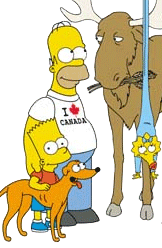 Modern Canada, as the magisterial first volume of the late 1980s Historical Atlas of Canada explained, has “been taking shape for almost 500 years and by New World standards is old..” From the beginning of North America’s encounter with the modern world economy, “developments in the north, which led to Canada, were different from those further south, which led to the United States. The country’s southern boundary is not a geographical absurdity.”
Modern Canada, as the magisterial first volume of the late 1980s Historical Atlas of Canada explained, has “been taking shape for almost 500 years and by New World standards is old..” From the beginning of North America’s encounter with the modern world economy, “developments in the north, which led to Canada, were different from those further south, which led to the United States. The country’s southern boundary is not a geographical absurdity.”
The British monarchy played no major role in the earlier centuries of modern Canadian history. Canada as a country with a culturally “British majority” in its population was not a reality until close to the middle of the 19th century. Not long after the middle of the 20th century this era in Canadian history was ending. Canada in the early 21st century has two official languages – English and French – and an increasingly multicultural and multiracial society. The Canadian people today boast cultural origins from virtually every corner of the contemporary global village, including Canada itself.
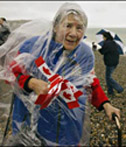 The British monarchy – even when it is more euphemistically characterized as a Canadian constitutional monarchy (whose monarch nonetheless still resides in the United Kingdom) – is not some unique spiritual key to the deep Canadian past. If there is any such unique key it is much more likely to be the first nations of the aboriginal peoples of Canada – who are almost certainly considerably more numerous today than they were in the 16th century, when they first made contact with the modern world economy.
The British monarchy – even when it is more euphemistically characterized as a Canadian constitutional monarchy (whose monarch nonetheless still resides in the United Kingdom) – is not some unique spiritual key to the deep Canadian past. If there is any such unique key it is much more likely to be the first nations of the aboriginal peoples of Canada – who are almost certainly considerably more numerous today than they were in the 16th century, when they first made contact with the modern world economy.
By not too long after the end of the Second World War, the Canada which began its present-day legal and constitutional existence as the first self-governing dominion of the British Empire in 1867 had practically become its own independent parliamentary democratic republic. In the early 21st century carrying on with Canada’s last remaining very vague ties to the British monarchy after the end of the reign of Queen Elizabeth II is no longer the best future for the Canadian people, who are the final practical source of sovereign authority in Canada today.
 The real modern history of the Canadian people in the global village is a longer, richer, more diverse, and more interesting story than the old colonial saga of 19th century British North America, which the obsolete symbolism of the British monarchy in the country continues to misrepresent as some unique key to the country’s past, present, and future.
The real modern history of the Canadian people in the global village is a longer, richer, more diverse, and more interesting story than the old colonial saga of 19th century British North America, which the obsolete symbolism of the British monarchy in the country continues to misrepresent as some unique key to the country’s past, present, and future.
The Canadian people today ought to be and increasingly are ready to grow up altogether at last. They start with the first nations and end with the latest new citizens. They have all begun to see that their real home is in Canada, and nowhere else. They need and deserve a new independent Canadian head of state who makes this clear – to all Canadians, and anyone else in the global village (and on the North American continent) who may be concerned.
* * * * * *
For detailed NOTES ON A DRAFT STRATEGY CLICK HERE.
For a list of all the elected members of the current Parliament of Canada, complete with postal and email addresses and fax and telephone numbers, CLICK HERE.
To return to Democracy in Rideau Hall, CLICK HERE.

